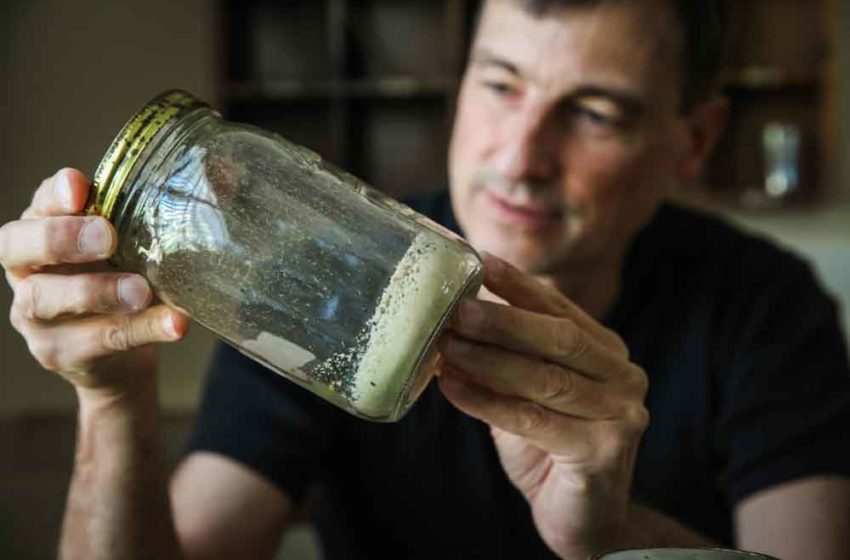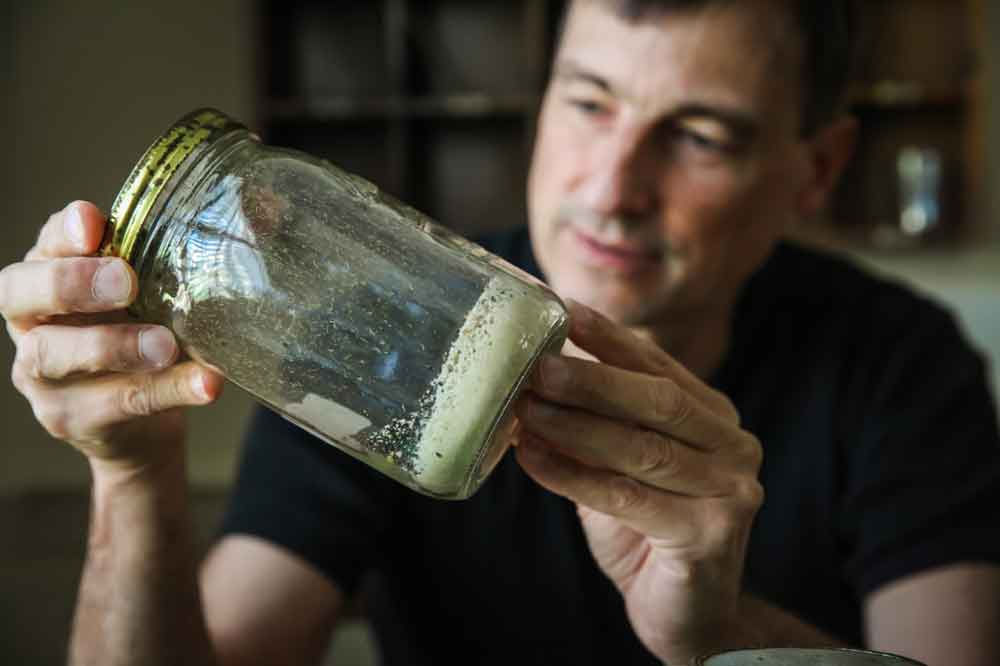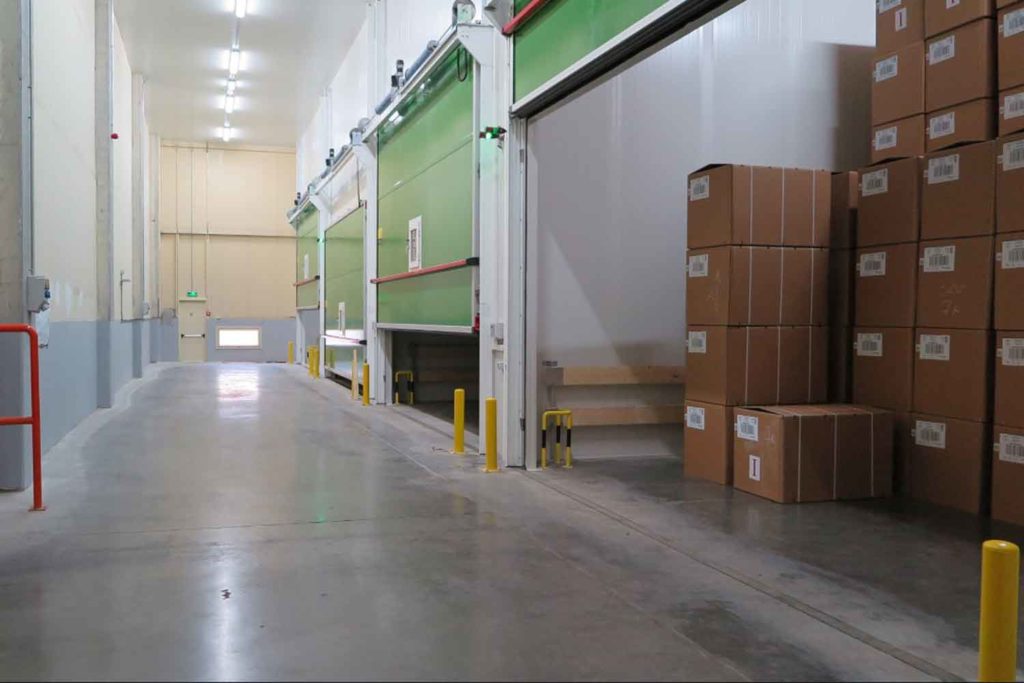Holding the Line
- Also in TR Infestation Control Print Edition
- March 1, 2022
- 0
- 4
- 13 minutes read


The war on tobacco insect pests continues.
By George Gay
On being asked recently whether the war against tobacco insect pests would ever be won, most of the experts and interested parties contacted, referring mainly to post-harvest tobacco in transit or storage, said no, qualified in one way or another. But Vernon Schmidt of Schmidt Pest Management Consulting wondered whether “winning” or “losing” was the best way to judge what was happening overall. The important point in the battle against the tobacco beetle and tobacco moth, he said, concerned whether industry players were working together, communicating well and implementing fundamental pest control strategies. In other words, was the industry stewarding its resources well to allow it to use the tools available to it wisely and thereby minimize tobacco and tobacco product losses?
“Communication lines need to remain open, and cooperative research needs to be supported by the players within the industry in order for us to stay ahead of the insect pests,” said Schmidt in an email response. “This is the brilliance of Coresta and the work of its Subgroup on Pest and Sanitation Management in Stored Tobacco [PSMST].”
Worryingly, however, he added a caveat that is unlikely to have come out of the blue. “Pulling out of cooperative endeavors and doing it on our own will not be a winning strategy,” said Schmidt, who was closely associated with Coresta and the PSMST in the past, and who is likely to be so again shortly after a break made necessary by his transition from an employee of Reynolds American to starting his own consultancy.
And Schmidt had other warnings. There would be no success without the industry’s putting in the hard work of implementing fundamental pest control practices, and there would still be challenges, he added, even where the fundamentals were in place. Phosphine resistance remained a challenge and would continue to worsen if the industry did not address the causes. Insisting on quality phosphine fumigations remained a must, and consideration had to be given to eliminating ineffective fumigations, such as container fumigations, or, at least, implementing measures to improve them greatly by, for instance, requiring barrier sheeting be placed on the floors of containers before loading to minimize gas leakage.
And in what seemed to me to be a minor bombshell, Schmidt admitted that the way in which phosphine worked as a fumigant still needed to be understood better and should continue to be investigated cooperatively. Such investigations, he added, would likely lead to a revision of the Coresta Fumigation Guide and require a new round of global training.
Exploring Alternatives
At the same time, the 30-year search for an alternative to phosphine should continue, again co-operatively, said Schmidt. There was promising work underway investigating a potential alternative to phosphine, sulfuryl fluoride, which offered a completely different mode of action from phosphine. This had the potential to break phosphine resistance where it existed and, additionally, preserve phosphine as an excellent tool for the industry.
And moving away from fumigation techniques, Schmidt said controlled atmosphere (CA) and freezing treatments should be implemented where feasible.
Rene Luyten, a director at b-Cat, which installs CA chambers, made the point that tobacco insects were difficult to control, partly because they were able to adapt to new circumstances. In other words, while it was possible to eliminate such insects in individual tobacco batches, there were often routes through which others could enter those batches. In part, this was down to the very nature of tobacco, which is a bulk product subject to transportation, division into smaller consignments and storage. Additionally, tobacco doesn’t exist in isolation but is sometimes stored alongside other products that also provide homes and breeding grounds for insects of concern.
Indeed, Luyten said it was possible to have in-house clean tobacco free of insects or to receive clean tobacco on one day and the next day to have a huge issue with insects. Of course, the severity of the problem would depend, in part, on the location of the warehouse, with those in warmer climes likely to experience more insect activity. But such issues could arise in many places, added Luyten, even when everybody in the tobacco chain did their best to avoid infestation. Fumigators might comply with best practices that conformed with the guidelines laid down by Coresta. And warehouses might employ best practices in respect of storage, including the use of good sanitation programs. But it wasn’t always possible to have control of all factors, such as when a neighboring warehouse storing raw food didn’t employ strict and proper sanitation protocols.

(Photo: b-Cat)
Positives and Negatives
Schmidt, too, saw positives and negatives stretching along the supply chain. A positive would see farmers eliminating carry-over tobacco, but the fact that farmers were unable to treat their post-harvested tobacco was a negative, he said. The receipt by processors of infested tobacco was a negative while the lethal effects to insects of processing was a positive. Reinfestation during transport was a negative while monitoring programs for transported tobacco provided a positive. Good segregation practices during storage constituted a positive, but undetected phosphine resistance was a negative. Continually improved cleaning programs at manufacturing plants constituted a positive, but insect harborages that could not be eliminated without dismantling equipment comprised a negative.
There is at least one caveat you have to add to the idea that the war against tobacco insects cannot be won. It can be won in the sense that insects of all types and in all their life stages can be eliminated from tobacco just before it is manufactured. Luyten said an increasing number of tobacco manufacturing plants were installing CA technology, which he described as a “green and natural treatment method” offering a 100 percent mortality rate among insect pests in all their life stages. In fact, b-Cat’s main building program currently involves installing CA facilities, including remote control and monitoring systems, at manufacturing sites.
Away from the major manufacturing sites, things are rather different. For instance, Guy Harvey, the CEO of Transcom Sharaf in Africa, who is based out of Mozambique, said businesses in that part of the world used only chemical fumigation, though this was not for want of trying other methods. Harvey said his company had completed trials on the use of CA in Mozambique but that it seemed the industry was not ready for it yet, which I took to mean that companies further down the supply chain were not willing to help pick up additional costs arising from CA. Certainly, in Harvey’s view, the capital costs of CA were holding back its use in Mozambique.
This might be unfortunate, though it has to be remembered that fumigation can be effective. Nico Vroom, who runs the consultancy N.I.C.O, also believes the war against tobacco insects will never be won, but he believes, too, that infestations can be kept to a “manageable level” through the use of good fumigation practices and through the employment of recent technological advances, such as sensors for constantly monitoring tobacco.

(Photo: Transcom Sharaf)
Ongoing Monitoring
One respondent who didn’t give an unequivocal “no” in answer to the question about whether the industry was winning the war against insects was Steven Bailey, managing director of the Barrettine Group, which manufactures the Mobe Combo insect monitoring trap. Bailey said he thought it unlikely that the industry was winning the war, but that it might be holding its own. Traditional treatment methods using fumigants were limited to only a few. He was unaware of any new pesticides coming through beyond, perhaps, sulfuryl fluoride, he added, and due to high regulatory and approval costs, didn’t expect there to be any anytime soon. This, together with ongoing phosphine-resistance issues, was a concern, but CA treatments in conjunction with insect monitoring and traditional methods were helping the industry to stay on top of the problem. The importance of ongoing insect monitoring was therefore essential in pinpointing infestations so that control measures could be carried out as soon as identified, thus preventing any infestation from escalating.
One of the matters that gets little airing in respect of tobacco insects concerns responsibility. Who is or should be responsible for ensuring tobacco is taken in at its destination—at the manufacturer’s site—insect-free?
Well, according to Rainer Busch of NewCo, currently, the shipper is obliged to fumigate tobacco before loading, even though it is very difficult for the shipper to control what happens to that tobacco during transport and when it is opened at its destination. And if the tobacco was found to have insect infestation at its destination, to have been infested during transport, it was necessary to refumigate it or put it through another treatment. It would therefore be better economically and financially to avoid having to carry out two treatments by switching the fumigation or other treatment from the point of shipment to the destination.
It would seem that while the industry might not be winning the war against insects, it is not losing all the battles. Evripidis Christidis of Missirian told me that the application of integrated pest management techniques was helping the industry to win in the region in which his company operates—the region where classical oriental tobacco is produced. In general, the amount of leaf tobacco currently lost to insects was proportionally less than it had been during past decades. But, he added, this sort of success required close attention being paid in five areas:
- Personnel training and awareness;
- Facilities management, including cleaning and sanitation, operating with open structures and creating barriers to insects, such as air curtains and mesh nets, and segmenting the green and final products;
- Selection of suitable means of transportation;
- Pest monitoring, with pheromone traps, and the use of UV lamps and space/surface fogging when necessary during tobacco storage; and
- Pest control methods.
Another factor that had helped the industry attain better results was the use of only specialized and licensed contractors to perform control and prevention activities, said Christidis. And yet another had been the introduction of Coresta standards for the fumigation in respect of resistant beetle populations, which basically involved higher phosphine concentrations and longer exposure times. A radical but expensive proposal would involve vacuum or nitrogen packing of the final leaf product.
Learning Lessons
The importance of Coresta was raised by most respondents, and so it is unfortunate that the Covid-19 pandemic has interfered with some of its work, including the PSMST’s Infestation Control Conferences that, until the pandemic struck, had been held annually around the globe. Of course, there have been other problems caused by the pandemic. Shipping delays have created tobacco transport congestion, and there have been interruptions caused by staff shortages, supply chain difficulties and other transport issues. But the pandemic has also caused a lot of rethinks, some of them positive. Luyten told me that while the start of the pandemic had caused concern, it turned out the past two years had been the best ever for b-Cat’s business. When travelling became almost impossible, it was discovered that internet communications using Teams or Zoom could easily stand in for some face-to-face meetings. “I do hope that everybody is having the same idea,” said Luyten, “that we have learned from this pandemic that travelling, which was a common thing, is not always needed. We all can save a lot of time and help the planet.”
Which brings us, perhaps, to the most important question. In fighting tobacco insects, are we winning or losing the environmental battle? And there seems to be some good news here. Schmidt told me that industry practices had little negative environmental impact. Beneficial insects were not threatened by current common practices, he said, and phosphine readily broke down in ultraviolet light. At the same time, however, continued training on best practices would help with reducing the improper use of insecticides and excessive fumigant use.

